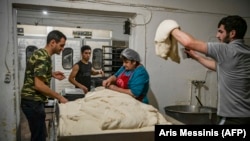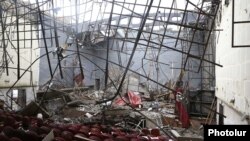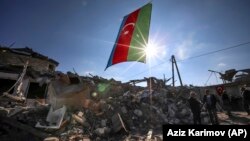The continuing fighting has been accompanied by Azerbaijani shelling of virtually all Karabakh towns which has caused severe damage to their public infrastructure. Most civilian residents of settlements located close to the Armenian-Azerbaijani frontlines have been evacuated to other parts of Karabakh or Armenia. Tens of thousands of other Karabakh civilians have also taken refuge in Armenia since the start of the war on September 27.
“With regard to the infrastructures, I must say that all services are working around the clock and managing to largely maintain electricity supply and telecommunication services,” Grigori Martirosian, the Karabakh state minister, told RFE/RL’s Armenian Service.
“There were problems with telecommunication but they were quickly resolved. Natural gas supplies have already been partly restored and this work is continuing,” he said.
Martirosian said that the authorities have also ensured continued food supplies to Karabakh with the help of Armenia’s government and private charities. There have also been no serious disruptions in the payment of public sector salaries and pensions, he said.
The largest of those charities, the All-Armenian Fund Hayastan, has raised over $140 million for humanitarian and economic aid to Karabakh. The Yerevan-based fund has attracted the bulk of those donations from Armenian Diaspora communities around the world.
The Karabakh government set up earlier this week a task force to assess the needs of Karabakh Armenian refugees in Armenia and coordinate the provision of relief aid and services to them.
According to it, the fighting has left nearly 40 Karabakh civilians dead so far.
The hostilities have also affected many residents of Azerbaijani cities and villages north and east of Karabakh. The Azerbaijani authorities have reported more than 60 deaths among them.
Mutual shelling of civilian areas on either side of the Karabakh “line of contact” appears to have somewhat eased this week. The Karabakh capital Stepanakert has not been shelled for the last four days.
An RFE/RL correspondent saw several open food stores and pharmacies in Stepanakert on Thursday. Nevertheless, most remaining local residents continued to live in basements and other bomb shelters.






